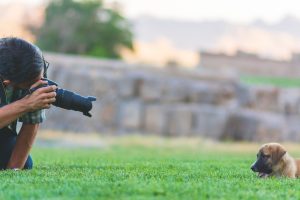This week we interviewed our past professor Jodi Streelasky. In our course with her, she showed a few examples of how she used photography in her past classroom, so we thought she could give us some insight into photography in the classroom.
Jodi loves to use photography in the classroom. She values it as a project for students to do (examples below), as a way to create ownership in the space for students, and as an assessment tool. Jodi sees photography as a way for students to express themselves and document their own life and learning. She sees it as a tool that educators can use to document their students’ learning and as a way to incorporate new ways of discovering information. Through this, she warns teachers to be careful on the ethics behind using photography. Teachers must gain a blanket release form from admin to send home to guardians to allow for the use of photography which includes students. This goes for photos used inside or outside of the classroom. She also warns that there is a bit of panic from new teachers on if they violate these contracts or not with certain projects. She suggests being very open with admin, students, and parents about projects to make sure that all parties consent to each step of the process, and to make sure that those important release forms are in place. Once this is done, educators have the freedom to explore photography with their students freely.
One project that Jodi spearheaded was the photography club for grades 7 and 8. There were 12 students of varying genders that were a part of this club. One project that was given was a series focused on the history of their city. The students were tasked with researching a historical building, landmark or site within Regina and capturing the selected thing on film. Students would research in their spare time and then capture images over their lunch break. Jodi along with a coworker would drive students around the city to take the pictures. Due to the car space and limited time, they would alternate the group of students that would go every other week. It is important to note that parent permission forms were needed to participate.
 After the images were captured they were printed and hung up around the school as a homage to the history of their city. This project was created to help spur a natural desire to learn about history. Students who participated were excited about learning about the history of these places and about history in general after doing this project.
After the images were captured they were printed and hung up around the school as a homage to the history of their city. This project was created to help spur a natural desire to learn about history. Students who participated were excited about learning about the history of these places and about history in general after doing this project.
How Photography can Bridge the Gap Between School and Home
As educators, it is crucial that we never forget each child comes into our classroom with a story- a complex web of experiences that shape them into the individuals they are.
Even the youngest of students carry unique sets of intricate encounters with them, as recognized with University of Victoria professor and former teacher Jodi Streelasky. Jodi taught in primary classrooms for many years, and always focussed on the individuality of each child. In her pedagogy and research, she was interested in collapsing the all-too-present barrier between school and home life.
One of the ways that Jodi was able to actualize this was through a sixteen-week photography project with a class of grade one students. Each student had the opportunity to take a digital camera home for a week, after instruction on how to properly hold, point and shoot the devices . They were tasked with taking  photographs of aspects from their daily lives that held importance to them. Granting children the right to handle and use cameras showed respect for their capabilities- the students rose to the occasion and no cameras were lost or damaged.
photographs of aspects from their daily lives that held importance to them. Granting children the right to handle and use cameras showed respect for their capabilities- the students rose to the occasion and no cameras were lost or damaged.
The resulting photographs acted as a set of data that allowed for insight into the lives of Jodi’s students. Not only was she able to realize the vastly different worlds of each child, but the themes that emerged were indicative of certain tropes that hold great relevance for students of that age group. To elaborate, many children took photos of pets (such as cats) and family members. This goes to show that such motifs reign heavy in the minds of grade one children. Such insight is beneficial in designing lesson plans and adjusting our teaching to captivate student interest.
To go further, this task bridged the disconnect that often exists between school and the rest of student’s worlds. Dissociating one’s outside experiences from the events that take place within the classroom stifles the holistic education that benefits students throughout their lives. Once children realize that school and home are not two separate entities, deeper learning can take place.
All in all, Jodi’s grade one photography project acted as a multifaceted medium for deep, engaging teaching. Not only did the students gain a sense of independence and responsibility but their further learning was improved by the insight their teacher gained into their interests. Perhaps most important of all, this task was a huge step towards erasing the arbitrary line children often drawn between home and school.

Leave a Reply
You must be logged in to post a comment.